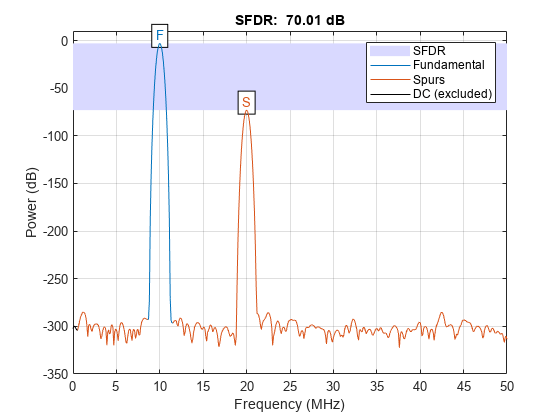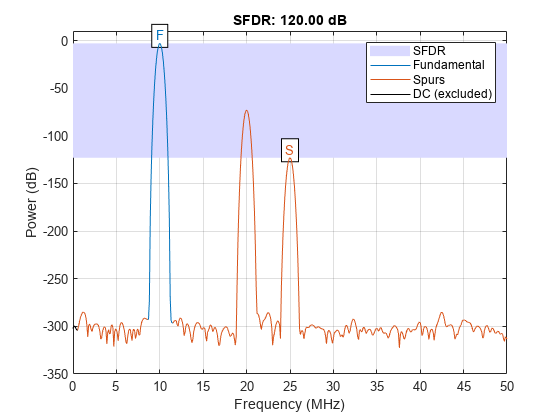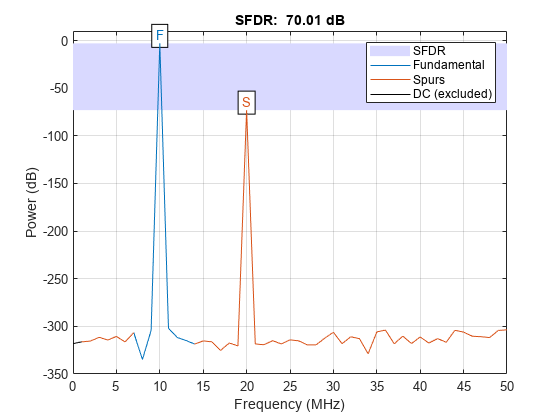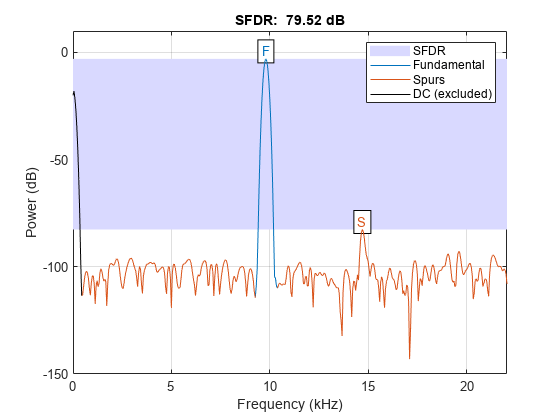sfdr
Spurious free dynamic range
Syntax
Description
r = sfdr(x)r, in
dB of the real sinusoidal signal, x. sfdr computes
the power spectrum using a modified periodogram and a Kaiser window
with β = 38. The mean is subtracted from x before
computing the power spectrum. The number of points used in the computation
of the discrete Fourier transform (DFT) is the same as the length
of the signal, x.
r = sfdr(x,fs,msd)msd,
specified in cycles/unit time. The sample rate is fs.
If the carrier frequency is Fc, then all spurs
in the interval (Fc-msd, Fc+msd)
are ignored.
r = sfdr(sxx,f,'power')sxx. f is
the vector of frequencies corresponding to the power estimates in sxx.
The first element of f must equal 0. The algorithm
removes all the power that decreases monotonically away from the DC
bin.
r = sfdr(sxx,f,msd,'power')msd.
If the carrier frequency is Fc, then all spurs
in the interval (Fc-msd, Fc+msd)
are ignored. When the input to sfdr is a power
spectrum, specifying msd can prevent high sidelobe
levels from being identified as spurs.
sfdr(___) with no output arguments
plots the spectrum of the signal in the current figure window. It
uses different colors to draw the fundamental component, the DC value,
and the rest of the spectrum. It shades the SFDR and displays its
value above the plot. It also labels the fundamental and the largest
spur.
Examples
Input Arguments
Output Arguments
More About
Extended Capabilities
Version History
Introduced in R2013a




